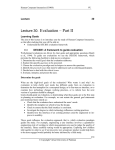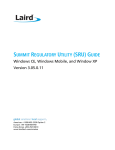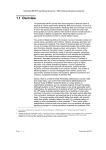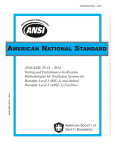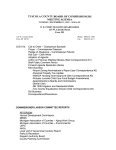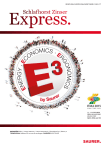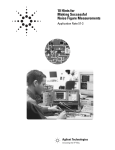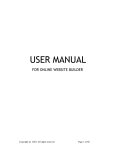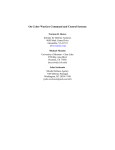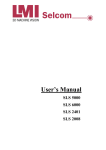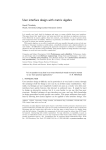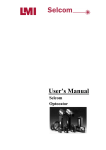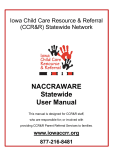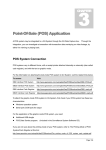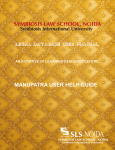Download clear Fallout: Nuclear Fission Technologies and
Transcript
Nu Un clear Fallout: Nuclear Fission Technologies and Environmental Human Health € ______________________________________________ FYS 244 Instructor: Rachel Narehood Austin Office: Bardwell 111 #24 Contact info: [email protected], 786-6295 Class Meetings: MWRF 11:00 am - 11:55 am DANA 300 (note individual meetings on Thursdays will take place in Bardwell) Office hours: Wednesday 8:00 - 9:15, Thursday 10-11, other hours by appointment Course Description: In the early 1940’s, scientists gathered to work on a top-secret project in which they sought to harness the immense energies that could be released by splitting atomic nuclei. The goals of this project were realized when two atomic bombs were dropped on the Japanese cities of Hiroshima and Nagasaki, an event that had immediate and profound health effects on a large number of people living in the surrounding area. After the bombs were dropped, atomic fission technologies were a part of modern culture. Fission technologies have had many profound consequences. Many of these consequences degraded human health and the environment. Were humans prepared for the environmental and human health effects of atomic fission? What does it mean to be “prepared” for the effects of any new technology? Did people make the best decisions possible based on what they knew and could have known? If they were not prepared, was it due to ignorance, hubris, deliberate indifference, or some other factor or combination of factors? In this seminar we will study the environmental and human health effects of atomic fission technologies, and the people who made decisions about these effects, beginning with the earliest experiments and continuing to present-day controversies surrounding the disposal of radioactive material. Course goals and instructor expectations: First year seminars are courses for first year students only that serve to introduce and develop important intellectual tools. The abilities to think critically and write clearly are the two most important skills you will develop at Bates. Also, this seminar will hopefully initiate you into a lifelong process of challenging yourself – intellectually and emotionally – with your own work, independent of the demands that any professor or employer places on you. It is expected that you will attend class regularly and that you will come to class prepared to engage the day’s activities. As your instructor, I will provide clear assignments and clear, constructive, and timely feedback on all assignments. I will also set aside adequate time in my schedule so that you can meet with me outside of class. Many of the Thursday class periods will be used for individual meetings to discuss writing assignments Writing and Grading: Editing is the key to good writing. All papers will be rewritten after being read and commented on by the professor and a student. Please hand in two copies of each paper. Eighty percent of your final grade will represent the average of all of the grades you have received on your written work. Twenty percent of your grade will reflect the extent to which you thoughtfully and respectfully participate in class discussions and reflect on class work in your journal. Failure to attend every class will detract from your final grade. Every class that you miss after the first absence will lower your final grade by _ letter grade. Failure to arrive at class on time will also detract from your final grade. Every two classes that you arrive at late will lower your final grade by _ letter grade. Late paper policy: Papers are due at the start of class on the date noted in the syllabus. You must bring them to class (if you have not handed them in earlier). Papers received after the deadline (including papers that you just “need to run back to the dorm to get”) will be lowered 1/2 letter grade for each 24 hour period that they are late. Please do not ask me to make exceptions to this policy. It is only by having consistent policies that I can be fair to all students. Academic Honesty: As a student at Bates College, you are obliged to follow the College's policies on academic honest and fair use of materials. Establishing good practices for correct use of sources is an important step in the development of the intellect. Complete guidelines for academic honesty are found in the “Statement on Plagiarism and A Guide to Source Acknowledgements”, given to you during orientation. I expect you to read those guidelines. The key points from those guidelines are outlined here. 1. Any idea or words that you obtain from any other source must be acknowledged in your work unless they clearly fall into the domain of "common knowledge". For example, I do not need to reference the idea that the earth is round since that is considered common knowledge, even though I myself have never done any experiments that taught me this fact directly. Sources include web sites (references to which should be dated to note the date access), books, magazines, etc. If you obtain multiple ideas from a single source, you must cite the source each time you introduce a new idea. If you use four or more words consecutively you must use quotations. Do not try to get around this rule by sticking in a word or two to interrupt the "four word" rule. The basic idea here is that if you are getting specific words and phrase structures from a source, the words and phrases must be represented with quotations. 2. Avoid, at all costs, deliberate plagiarism! Faculty members have access to many sophisticated search tools that allow us to easily track down plagiarized papers. The penalty for plagiarism is severe -- generally a year's suspension for the first infraction, expulsion for the second infraction, and a permanent blight on your academic record. If you feel yourself utterly stressed and seemingly hopelessly behind in all your classes either approach your faculty members and ask for extensions (note my late policy above, which does allow for late papers) or contact someone in the Dean of Students' Office who can help you both establish better time management skills and often help you through a crisis. 3. When in doubt about what is acceptable in any assignment (e.g. what degree of collaboration is allowed, how much work from a prior course can you include?), it is your responsible to ask the professor for clarification! Journal: Buy a bound notebook for the class. Use the notebook to enter thoughts you have about each reading assignment and also about class discussions. You can use this space to write notes to yourself when you are preparing to lead class discussions too and are thinking about the assigned reading. The journal is a place for you to explore your reactions and ideas to both the material you have read and the thoughts your classmates have expressed. Feel reassured that it is not intended to be a place for private thoughts unrelated to course material. The journals will be collected periodically. Student led class discussions: Every Wednesday, one member of the class will lead the class in discussing the assigned reading. It is important for students to recognize how active learning needs to be. When the professor always leads the class discussion, it is easy for many students to feel like a very passive participant in the class. However, by taking turns leading class discussion, you will feel the vitality that a room full of people with interesting ideas has. You'll also be motivated not only to read the assigned material but to begin analyzing -- trying to put it into an intellectual framework that makes it interesting and connects it to other ideas. At the end of this syllabus there are guidelines we will follow that I have borrowed from Professor Gale Rhodes at the University of Southern Maine and Professor Robert Schaible at Lewiston-Auburn College. Professor as academic advisor: As your first year seminar instructor, I will also serve as your academic advisor until you select a major (typically done sometime in your sophomore year, although you can declare a major earlier than that if you feel confident you are ready). There are a couple of aspects of the advisee/advisor relationship that need to be clarified separate from our relationship as student/professor. First, it is your responsibility to select a path through Bates College that challenges and stimulates you. My responsibility is to check from time to time that you are doing that and to give you advice, when requested, about the benefits and consequences of choices you are considering. From that premise, it follows that if you are not finding this FYS course challenging and stimulating, you should drop it and should not hesitate to do so because you are worried about "hurting my feelings". I know that students can find this situation awkward so I make it clear now that your intellectual development is both of our highest priority. It also follows that it is your job to read through the college catalog and work through the "nuts and bolts" of the college's requirements. You should come to our advising meetings having thought about what courses you want to take and how they fit with your long term goals for your Bates education. Course Material: The following books should be purchased for the course. All are available at the College bookstore. Masuji Ibuse John Hersey Karl Morgan Michael Frayn John McPhee Black Rain, translated by John Bester, 1969. Hiroshima, 1946. The Angry Genie, 1999. Copenhagen, 1998. The Curve of Binding Energy, 1973. In addition, several chapters from William Zinser’s book On writing well will be provided to you. Development of topics within the course: Weeks 1 & 2 Radiation Biochemistry: We will begin the course by covering some of the science that describes how ionizing radiation affects living organisms. This first year seminar is considered, for purposes of general education requirements, to fulfill one of the three natural science courses required for graduation. It is important to understand what scientists know now about how ionizing radiation affects living organisms in order to evaluate the claims people make about the dangers (or lack thereof) of being exposed to ionizing radiation. Weeks 3, 4 & 5 Hiroshima and Nagasaki: Next we move to examining works that chronicle the human and environmental health effects from the world's only nuclear weapons deployments. We'll read a novel, listen to music, watch films, read reports from the commission established to measure the health effects from the bombing, in an effort to understand what happened in these cities as a consequence of the August 1945 bombings of these two cities. Weeks 6, 7 & 8 The Allied Bomb Development Effort: We'll go backward in time a bit to the start of the Manhattan project and trace the thinking of scientists involved in the Manhattan project. Were scientists thinking about the potential human and environmental health effects of the technology they were developing? If they were not thinking about it, why not? A related, and important question, is "How difficult is it to think about the possible consequences of any new technology?". During this period, we will interact with another FYS studying the psychology of persuasion to see how different disciplines look at the question of why scientists develop nuclear weapons. Weeks 9 & 10 Bohr and Heisenberg: A microcosm Using Michael Frayn's play, we'll explore the famous interaction between Niels Bohr and Werner Heisenberg in 1941. Heisenberg, who had studied under Bohr and written his most famous papers while working with Bohr, comes to Denmark at the beginning of the German occupation. The two reportedly discuss the possibility of using fission to make a nuclear weapon, although the substance of their discussion has remained highly contested for almost sixty years. What can we learn about the difficulties of reconstructing thoughts given the challenges of reconstructing this one interaction? What too do we learn about the intellectual leader of the German nuclear weapons program -- a man who was among the brightest and most influential physicists of the 20th century? Weeks 11 & 12 The Scientist as Dissident In the final weeks of the course, we'll profile scientists who have dissented with the majority opinion in their fields. Are there any commonalities between scientists who disagree with the norms of their community? What reasons can we identify that scientists speak out about the perceived shortcomings or dangers of the fields they work in. It is important that we not see the development of nuclear weapons as a single, isolated event. Rather it can be a vehicle for thinking about the development of any new technology. Professor's statement: I believe I have an obligation (similar to a Hippocratic Oath) to value the clarity and reflectiveness of student ideas and to NOT judge the ideas of students by the extent to which they match or do not match my own personal views. Similarly I believe I am obliged to teach critical thinking skills and to NOT create a classroom environment that attempts to mold student thoughts to a particular world view. This course may stir political passions. We need to recognize our personal views, where appropriate state them clearly and without deriding opposing views, and be open to changing our views based on the well reasoned arguments of others. Course Calendar: Date Daily topics & activities September 1 September 3 September 4 September 5 September 8 September 10 September 11 Introduction Radiation biochemistry (September 3-12) Individual meetings available if advising questions remain September 12 September 15 September 17 September 18 September 19 September 22 September 24 September 25 September 26 September 29 October 1 October 2 October 3 October 6 October 8 October 9 October 10 October 13 October 20 October 22 October 23 October 24 October 27 October 29 Draft 1 1st writing assignment due Some Nuts and Bolts of College: Academic Honesty, Time ManagementHolly Gurney Journals due Hiroshima (September 15-October 3) Final Draft 1st writing assignment due, Draft 1 2nd writing assignment due STUDENT LED DISCUSSION Individual meetings to discuss students' written work Final Draft 2nd writing assignment due, Draft 1 3rd writing assignment due STUDENT LED DISCUSSION Individual meetings to discuss students' written work Journals due Final Draft 3rd writing assignment due, Draft 1 4th writing assignment due STUDENT LED DISCUSSION Individual meetings to discuss students' written work The Manhattan project (October 6-31) Final Draft 4th writing assignment due, first draft 5th writing assignment due Read editorial and other related articles from Nature, June 19, 2003 Volume 423, Issue no. 6942, p. 787 and other pages ("Silence of the neuroengineers") STUDENT LED DISCUSSION Individual meetings to discuss students' written work Journals due Final Draft 5th writing assignment due, first draft 6th writing assignment due Final Draft 6th writing assignment due, first draft 7th writing assignment due STUDENT LED DISCUSSION Individual meetings to discuss students' written work Journals due Final Draft 7th writing assignment due, first draft 8th writing assignment due STUDENT LED DISCUSSION October 30 October 31 November 3 November 5 November 6 November 7 November 10 November 12 November 13 November 14 November 17 November 19 November 20 November 21 December 1 December 3 December 4 December 5 Individual meetings to discuss students' written work Bohr and Heisenberg (November 3-14) Final Draft 8th writing assignment due, first draft 9th writing assignment due STUDENT LED DISCUSSION Individual meetings to discuss students' written work Journals due Final Draft 9th writing assignment due, first draft 10th writing assignment due STUDENT LED DISCUSSION Individual meetings to discuss students' written work Scientists as dissidents (November 17 - December 5) Final Draft 10th writing assignment due, first draft 11th writing assignment due STUDENT LED DISCUSSION Individual meetings to discuss students' written work Final draft 11th and 12th writing assignment due STUDENT LED DISCUSSION Individual meetings to discuss students' written work Journals due User's Manual for Student-Led Discussion Copyright 2003 Gale Rhodes and Robert Schaible. Adapted with permission of the authors. Introduction We have developed a manual suggesting rules and useful tools for student-led discussion in the format we used in two interdisciplinary courses at the University of Southern Maine: 1) Metaphor and Myth in Science and Literature and 2) Life and Literature After Darwin. Our format evolved from traditional discussion methods as we sought more effective means to achieve one of the primary goals of our courses: to help students learn to form, articulate, and defend opinions in open discussion. Students develop their opinions as they analyze and criticize the texts and as they search for concepts, issues, and themes that connect the texts and the disparate disciplines that are represented in these courses. Our format, in brief, is as follows. We ask all students to prepare for each discussion as if they plan to serve as discussion leader. Obviously, a student who prepares to lead discussion is well prepared to participate. Then at the beginning of each class, we pick a discussion leader and two supporters at random and turn the class over to the students: faculty do not contribute to discussion until near the end of the first half of the period. Instead, we listen, attempting to learn the students' level of understanding of the material, and to see which issues are of compelling interest to them. Near the midpoint of the period, we enter the discussion, but do not take it over. We try to take advantage of what we heard in the first half in order to help students attain a deeper understanding of the material and to make connections across the breadth of the course. In shaping discussions around the issues of genuine interest to students, we aim to bolster their confidence that they can read and analyze complex material on their own. We treat our courses, in effect, as experimental arenas (or labs) in which careful reading, discussion, and persuasion are valued more highly than power and authority as ways of constructing truth and meaning in a pluralistic world. In so doing, we are developing a pedagogy that is consistent with postmodern theories of knowing, according to which no one speaks from a privileged podium and any truth claim is viewed as contingent--i.e., as constructed within and valid for a particular interpretive community. We are also responding to widespread criticism, found most notably in the report by the prestigious Carnegie Commission on Higher Education (1987), that undergraduate education is not adequately teaching the skills of critical thinking. In any course, it is crucial to find a format appropriate to the course goals. Even if our format seems particularly apt for your course, do not adopt it blindly. Be willing to adjust rules on the fly if you see a variation that will sharpen the aim at your particular goals. Even if our format seems particularly inappropriate for your course, we urge you at least to read through the manual with your classes in mind; perhaps a specific rule or suggestion will trigger useful ideas that will make your own efforts more successful. The first section of the manual contains the rules we follow, in the form of instructions to the students and faculty. The second section presents the instructions we give our students on how to lead discussion in our format, where the leader is not an expert, but has prepared in the same way as all other participants. This guide contains suggestions that may be useful to anyone who leads or participates in discussions. In the third section, we suggest reasons why our method leads to impressive, enthusiastic student participation, and why we find it so gratifying. User's Manual SECTION 1: THE RULES I. At the beginning of the semester A. Students 1) Purchase all the books and materials for the course. The order of topics in the syllabus may change, so texts scheduled for use later in the semester may be assigned earlier. 2) Read the syllabus and course guidelines carefully, listen to the faculty presentation on the first day of class, and ask questions to be sure you understand the course format. You are expected to participate at some meaningful level in class discussions. If you are uneasy about this requirement and tempted to drop, please stick around for two or three discussions. You will probably find them less frightening than you anticipate. B) Faculty 1) Provide a syllabus that describes the course goals and format in detail. 2) Provide instructions on how to lead discussions under this format. (See Section 2 of this manual.) 3) At the first meeting, present an overview of the course and discuss the format. Try to allay the fears of students who might drop the course as soon as they understand that they must take such an active role in class. 4) Follow these general logistics: a) Seat students in a circle. b) Make a seating chart and use it to learn student names. c) Copy the seating chart for students so that they learn each other's names. d) Provide a list of names and phone numbers of students and faculty to help students get assignments when they miss a class. II. Before each class A. Students 1) Read and study the assignment made at the end of the previous class. 2) Formulate and write down four or five discussion questions based upon the assigned reading. 3) On the assumption that you will lead the day's discussion, write a brief (less than 5-minute) opening statement about the assignment. Your statement should set the stage for, and end by raising, one or more of your discussion questions. B. Faculty 1) Read the assignment and study related supplementary sources. 2) List concepts and issues likely to interest the students, as well as those the students are likely to find difficult. 3) Collect materials and formulate examples and illustrations that may be useful in helping the students with the concepts and issues listed in 2), above. 4) If team teaching, meet approximately one hour before class to discuss your expectations for the discussion, and to plan strategy for taking advantage of student interest in or difficulty with specific concepts. Warm up by discussing important topics. 5) Be willing to go to class with some questions and issues only partially resolved and clarified in your own mind, so that you can be an authentic seeker of knowledge during at least some of the discussion. III. During class A. Students 1) Listen to the introduction by the designated discussion leader and consider the discussion question(s) or issue(s) he or she raises. 2) Discuss the issues raised, keeping to the subject of the readings, attempting -- preferably in this order -- to analyze, criticize, and connect: a) Analyze the readings to gain a deeper understanding of difficult concepts, examples, the author's position, and the author's arguments. b) Criticize the readings, articulating and defending personal opinions about the adequacy of the author's presentation and arguments. c) Connect the issues you have analyzed and criticized to material of previous assignments in order to discern broader themes, similar concepts, and comparable or contrasting opinions. 3) As you participate, make good use of the text, at times calling attention to specific passages relevant to the issue at hand. When working with such a passage, allow time for others in the class to locate it and then read it aloud. 4) Ignore faculty during their period of enforced silence. Direct your attention to other students and regard faculty as recording secretaries on hand to take down information for use later in discussion. 5) Continue the student-led discussion with the same goals after faculty have joined in, using the faculty as needed to provide examples, explanations, and/or alternative positions. 6) Take brief notes of points and examples that deepen your understanding; opinions that differ from your own; and arguments that you find helpful, convincing, or worth trying to refute. These notes may be useful when you want to contribute to discussion, when you formulate study questions for subsequent classes, or when you write papers. Do not, however, allow note-taking to cause you to lose the thread of the discussion. B. Faculty 1) At the beginning of class, select, completely at random, a discussion leader and two back-ups or supporters for the leader from among the students present. 2) For at least 40% of the period (20 minutes out of 50 or 30 minutes out of 75), maintain complete silence (except perhaps to ask for page references when students refer to specific passages in the readings). 3) Provide no visual or audible responses to what you hear, and avoid making eye contact with students as they talk. 4) Specifying speakers by name, take notes on important issues raised in discussion, with an eye toward using this information later in discussion: a) Note the level of mastery of the assigned material, and be willing to discard your often-errant assumptions of where the students' difficulties might lie and thus to become better prepared to meet them at their level. b) Note the issues that grip the students, for student interest can often make an issue more productive. c) Note issues that are discarded before students have examined them as thoroughly as the readings allow. You may want to resurrect these issues after you enter the discussion. d) Note whether later lecture or faculty-led discussion might efficiently resolve peripheral or conceptual problems and help students focus on central issues. e) Note whether examples might clarify difficult concepts. (Recall instruction II.B.3: you should be armed with passages from other readings and helpful illustrations that you can present if appropriate.) 5) Near the end of the period of enforced silence, look for a way to enter discussion naturally and helpfully, without taking charge or altering the tenor of the discussion. Forcible entry of faculty into discussion erodes the students' confidence that they can make useful progress on their own. Therefore, as you approach your time, look for an interesting place to join in the moving stream of ideas. When that stream trickles out, look back to earlier issues that need more attention. Remember that, even after the period of enforced silence, the discussion ideally is still studentled. You can encourage students to continue speaking to each other by avoiding prolonged eye contact, even when a student is responding to your own question. 6) Provide, as requested by the students or as you deem useful, examples or augmenting material, not so much to add material to the course, but instead to clarify or to suggest directions in which important issues might lead. 7) Help the students to make connections and to find in the earlier discussion contrasting views that are fruitful to discuss further. 8) Try to cite students by name when returning to ideas they brought up in the earlier discussion. When possible, quote them directly from your notes, asking them if you are reporting their comments accurately. IV. After class A. Students (in groups of acquaintances, if possible) Spend a few minutes reflecting on the preceding discussion, perhaps jotting down notes (or amplifying notes made in class) of points that increased your understanding of the readings, and that may be useful in preparing for the next discussion or writing the next paper. Especially, take note of arguments that interested or surprised you. B. Faculty (together, if team teaching) 1) Reflect upon the preceding discussion, noting issues that were deeply explored and open issues that might be carried further. 2) Look ahead to future readings and consider whether to alter the order of assignments in order to pursue an open issue sooner than the current plan specifies, or in order to juxtapose future subjects fruitfully with open issues. 3) Recall from the preceding discussion any students who may have participated for the first time and consider strategies to affirm their efforts and encourage further participation. SECTION 2: HOW TO LEAD DISCUSSION Most students have never led a discussion. It is normal to be somewhat fearful about your first try. Most of us (including teachers) are afraid we'll be embarrassed by saying something wrong, being contradicted, or running out of things to say. Here are some suggestions to help you overcome your fears, prepare, get the discussion started, and sustain it. These suggestions apply specifically to the kinds of discussions we wish to have in this course, but you may find them useful any time you are faced with leading a discussion group. Preparing To lead a discussion, you must be familiar with the assigned material. "Familiar with" is, we believe, just the right phrase. You need not have mastered the material; after all, a goal of discussion is to move everyone towards mastery, that is, to improve everyone's (even the leader's) understanding. To prepare for discussion (leadership or participation), first read and study the assignment, underlining the more important or interesting points, and making notes in the margins. Then think about and write down some of the main issues that the author raises and a few questions pertinent to the issues. (Examples: 1) The author is trying to show how indirect our knowledge is. How does the author support this contention? 2) The author is explaining how evolution produces new traits. How do new traits appear? Explain the specific examples she uses. 3) This is a novel about the breakdown of a marriage. What factors contribute to its failure? If you can come up with a handful of questions, you're in good shape. Remember, everyone else in the class is formulating such questions: you can take advantage of their work to make your job easier. (More on this later.) But what if you are not asked to lead? Is this work wasted? Certainly not; you are now very well prepared to participate as someone else leads. With everyone prepared to lead, everyone is also prepared to discuss, and lively discussions will almost always ensue. Getting Started Class has started and your name has been drawn from the hat. How do you begin? Simply clear your throat and read (or better, present) your prepared statement. End by asking the first question or asking for discussion of the first issue on your list. Before you know it, the hard part -- getting started -- is done. One word of caution: Start out on a positive note. Avoid beginning with an apology for being poorly prepared or for finding the reading difficult. Treat the day's topic as having real value. Openers like "I didn't get much out of this" or "I don't agree with anything the author said" will stifle, rather then promote, discussion. If you treat the readings as worthwhile, your classmates will follow your lead, join you in examining the day's assignment, and thus make your job easier. Sustaining Discussion Discussions, like sleepy horses, need some urging to keep them moving. A discussion leader can often keep things moving with only modest prodding, giving the class its head when things are going well. Of course, if you can contribute something useful, do so; but other kinds of comments or actions on your part can sustain the discussion just as well as an injection of insight. Here are some suggestions: 1) Get students to talk to each other. Ask for a response to the most recent comments. (Anyone have a response to Clara's opinion?) Or ask a specific student to respond. (Clara, do you agree with Ralph?) 2) Get students to defend or explain their opinions. (Marvin why do you say that? What's your evidence or reasoning?) 3) Encourage an exploration of differing points of view. When you hear conflicting views, point them out and get the holders of those views to discuss their differences. Perhaps ask a third person to sum up the two positions. 4) Keep the class on the subject. If you are even halfway familiar with the material, you know when the discussion is no longer connected to it. Just say so. (We've gotten pretty far from the readings; let's get back on the subject.) Or simply consult your list of questions. Any sensible response to one of your questions is bound to be pertinent. 5) Point to a particular passage in the text relevant to a comment made by one person, or to a discussion among several. This might be a passage that challenges, or sums up and confirms, the views being expressed. 6) Don't fill every silence with your own voice. Any discussion will lapse occasionally. It is not your job as leader to avoid all silence. Some quiet periods are productive. Students who are not so quick to speak will frequently get the chance they need when others are quiet. If the silence gets too heavy, take advantage of the other students' lists of questions. (Ginny, give us one of the questions you brought to class.) Remember, as discussion leader you do not have to be the brains of the whole outfit. You are not expected to know it all; the class is full of students who have read the same assignment that you read. Your job is to give them a chance to talk about it and thus give others the benefits of their thinking. On the other hand, if any one student begins to do all the talking, gently correct this problem by bringing other students into the discussion. You are there to steer, to keep the beast reasonably near the center of the path, by pulling a rein when needed, by loosening the reins when it keeps to the trail, by reining it in when it threatens to gallop away to greener subjects. If students are talking to each other about the reading material, things are going well; relax, listen, and contribute when you can. The Goals of Discussion Discussion should lead to two results. First, we want analysis and clarification of the material. What is the author saying? What is the author's intended meaning of key words in the text? What is fact and what is the author's opinion? With what evidence does the author support opinions? What do you see as the theme of this story, poem, or play? What elements contribute to this theme? Second, we want response to, and criticism of, the author's work. What do you think of the author's opinion? Is the evidence or reasoning convincing? What other opinions are possible? Compare your opinion with that of the author. How does this poem make you feel? Why? What connections (harmonies or conflicts) do you find between this author's ideas and those of other thinkers we have studied? It is best to attack these two tasks, analysis and criticism, in the order described; after all, we must understand possible readings of the work before we can properly respond or criticize. As discussion leader, you will find that students want to express opinions before doing anything else. Keep pulling the class toward clarification of the readings. The more you accomplish here, the more meaningful and pertinent the criticisms and other responses will be. To reiterate, the discussion will swing naturally toward opinion, just as the horse turns naturally toward home. Keep pulling toward clarification (What does the author mean by...? What is a possible reading of...?) and you will achieve good balance between analysis and criticism. Finally, we want you to enjoy the discussions. Keep this in mind whenever differences of opinion arise. It's okay to defend your beliefs, but it is also okay to be wrong, to concede a point, to change your mind. A mind that never changes is about as useful as a window stuck in one position. The main object of argument is not to win, but to know the pleasure of real thinking and learning. SECTION 3: THE REWARDS OF STUDENT-LED DISCUSSION In practice our method has brought the best and most enjoyable discussions we have ever held in any of our courses. In what ways do we and our students find this approach gratifying, and what accounts for the gratification? I. As faculty, we recognize the importance, as well as the pleasure, of becoming co-learners with our students. A. We become co-learners by giving up the role of authority figures who reign over our students. B. We become co-learners because we willingly go to class to learn, with issues unresolved in our own minds so that there is a real opportunity for students to see us learn and help us learn. C. We become co-learners because we can never be sure in what direction the discussion will go and thus surprises are more likely: issues we have not already thought through are more likely to arise and lead us or free us to think freshly about a text or subject we think we have thoroughly explored and tracked. D. We become co-learners because students feel more free to share their thoughts and ideas with us in an environment where students are respected as thinkers and learners. II) Students become empowered as learners. A. Students are empowered because they sense the respect we have for them as they accept the responsibilities we offer to them. B. Students are empowered because they discover that they can indeed, on their own, analyze difficult texts, explore issues, and articulate ideas -- activities traditionally reserved for the authority of the lecture or the faculty-structured discussion. C. Students are empowered because they experience the gratification of being cited or quoted as part of a serious intellectual inquiry. D. Students are empowered because they experience the excitement and gratification of freely discussing and debating ideas on nearly level ground with persons traditionally thought to speak only from a position of power. E. Students are empowered by the simple act of learning to be prepared for every class. Probably the most important foundation for good discussion is a means of assuring that all participants read a specific assignment and think at length about the concepts and issued raised therein. The possibility of being chosen to lead discussion provides the impetus for such preparation. Conclusion We do not claim that this method of teaching is easy or that it is free of frustrations and disappointments. It requires extensive preparation, patience, tact, agility of thought, and a willingness to yield the privilege of always having the final word. Discussions will sometimes be marked by stammering, confusion, and error. We are convinced, however, that to stammer, to be confused, and to err are familiar and invaluable to all who learn to think critically and construct meaning for themselves. Furthermore, experience has taught us that much more often than not, students are very capable indeed of doing work we formerly thought impossible without our shepherding interference. Considering it the primary function of the university to preserve "the connection between knowledge and the zest of life (p.93)," Alfred North Whitehead (1929) wrote, "For successful education there must always be a certain freshness in the knowledge dealt with. Knowledge does not keep any better than fish and must come to students, as it were, just drawn out of the sea and with the freshness of its immediate importance." We agree, and suggest that when students themselves do the fishing, drawing knowledge out of the sea of their own careful reading and lively deliberations, such knowledge is fresher and tastier than any caught, scaled, prepared, and then served up by the teacher. And if, as Bruce Wilshire (1990) asserts, "Education involves . . . making sense of things together" (p.24), then a format that stresses talking among students and faculty, as opposed to talking at students by faculty, is surely the very essence of what education should and can be. References Boyer, E. (1987). College: The Undergraduate Experience in America. New York: Harper and Row. Whitehead, A. (1929). The Aim of Education and Other Essays. New York: Macmillan. Wilshire, B. (1990) The Moral Collapse of the University: Professionalism, Purity, and Alienation. Albany: State University of New York Press.
















